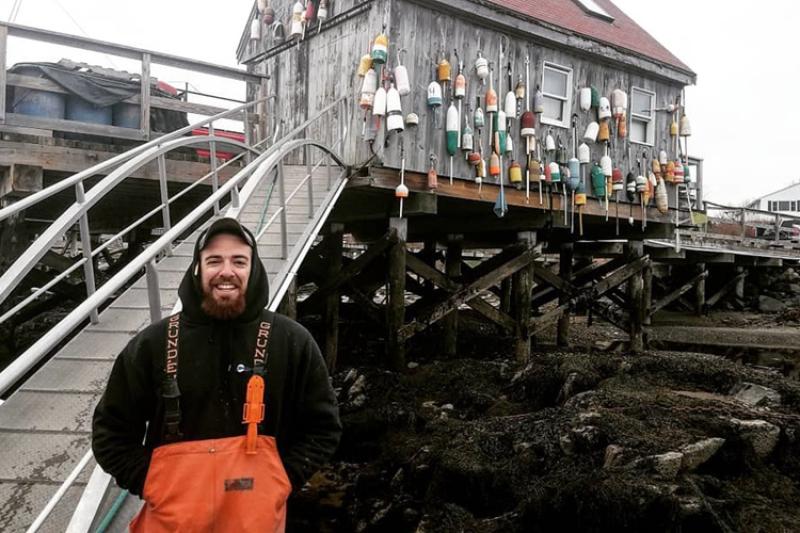Zachary Fyke is the new Observer Compliance Liaison in the Northeast Fisheries Science Center’s Fisheries Sampling Branch. A former fishery observer himself, he has been there and done that, as they say, and is up to the task.
“Observers can spend days or weeks aboard commercial fishing vessels, and the work is intense,” Fyke said. “Conditions may be uncomfortable. Long trips in close quarters and the observer’s role in monitoring compliance can sometimes lead to tensions on a vessel. That is where I come in.”
In addition to resolving conflicts, Fyke also helps ensure that vessels comply with procedures that keep the observer program on track to meet monitoring goals. That includes adequate observer notification about trips, taking observers when scheduled, and providing safe and suitable accommodations for them on the vessel. It also means allowing observers to do their job, and complying with safety and other environmental regulations.
Building Relationships With the Fishing Community


Anxious to try something different, he moved east to focus on marine species at the suggestion of his college biology professor, Dr. Daniel Hayes, who told him about the observer program. Although he didn’t know anyone in that part of the country, he moved to Narragansett, Rhode Island to work as an observer. He built relationships in the Point Judith fishing community and learned about Northwest Atlantic fisheries.
“I enjoy being in the field and working with the vessel captains and the observers,” Fyke said. “Sometimes I am following up on incidents that occur at sea, such as issues with accommodations, safety concerns, discard violations, trash disposal or derelict fishing gear. Other times I get to do port outreach and talk to the fishermen about the observer program. It varies, and that makes it interesting.”
Observes Undergo Intense Training, Certification
The work sometimes means dealing with NOAA’s Office of Law Enforcement, observer providers, and the U.S. Coast Guard. Observers are provided by companies under contract with NOAA Fisheries. They typically enter the program with a bachelor’s degree in the biological sciences or a related field, course work in math or statistics, and experience with computer data entry.

In the Northeast, they spend three weeks in intense training at the Northeast Fisheries Science Center’s observer training facility in Falmouth, Massachusetts. Training includes species identification, data collection, fishing and safety regulations, and learning at-sea survival skills. After initial trips with trainers they head off on their first solo trip aboard a commercial vessel. Regular safety training and certifications are required for each fishery and various gear types to keep their knowledge current.
Positive Interactions the Norm
“Despite the challenges, 95 percent or more of the trips go on without a problem and the interactions are positive,” Fyke said. “Most fishermen understand we have a job to do, just as they do.”
The data collected by observers are used to monitor fisheries, assess fish populations, set fishing quota, and inform management. Data are collected on paper logs during the trip and are uploaded to tablets within 48 hours of landing a trip. All trips are debriefed and the data audited for accuracy.
“The average observer stays with the program one to two years, although we have 22 observers with more than five years of experience,” Fyke said. “The irregular working schedule is difficult for some, and most leave to advance their career but are glad to have had the experience.”

For Fyke, meeting people and learning about their history and how they feel about what they do is his favorite part of the job. Fishing communities are very close knit, and have a wealth of knowledge about local historical fishing.
“I am taking what I‘ve learned and using it to help observers work through issues that may arise at sea. I can usually resolve the problem, and that is rewarding. In the end, observers and the commercial fishermen are both working for the same thing: more fish for the future, earning a reasonable living, and the thrill of being many miles offshore. Once the saltwater is in your blood it is hard to get rid of it.”



